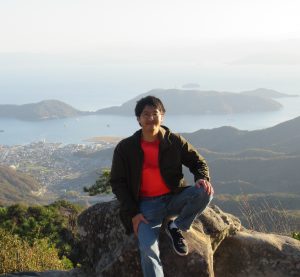100 Stories
OKOSTA Cooking Studio: Dispersing Okonomiyaki to the World
These days, Japanese food is world-renowned, and there seems to only be an upward trend in its popularity as time goes on. Everyone knows about sushi, chicken teriyaki is an international favorite, and ramen has become a quintessential part of the budget diet for college students the world over. Thus, when foreigners visit Japan, partaking in the real deal at Japanese restaurants is at the heart of most people’s plans, and recently, even Hiroshima-style okonomiyaki is gaining ground on tourists’ to-eat lists. The Otafuku Sauce Company is aware of this, and in response, opened up a unique facility for gourmet tourists inside the Hiroshima Station building: the OKOSTA Okonomiyaki Cooking Studio! Here aspiring okonomiyaki connoisseurs can try their hand at making the famous Hiroshima specialty by piling whatever they like onto the griddle to create their perfect, personal masterpieces.
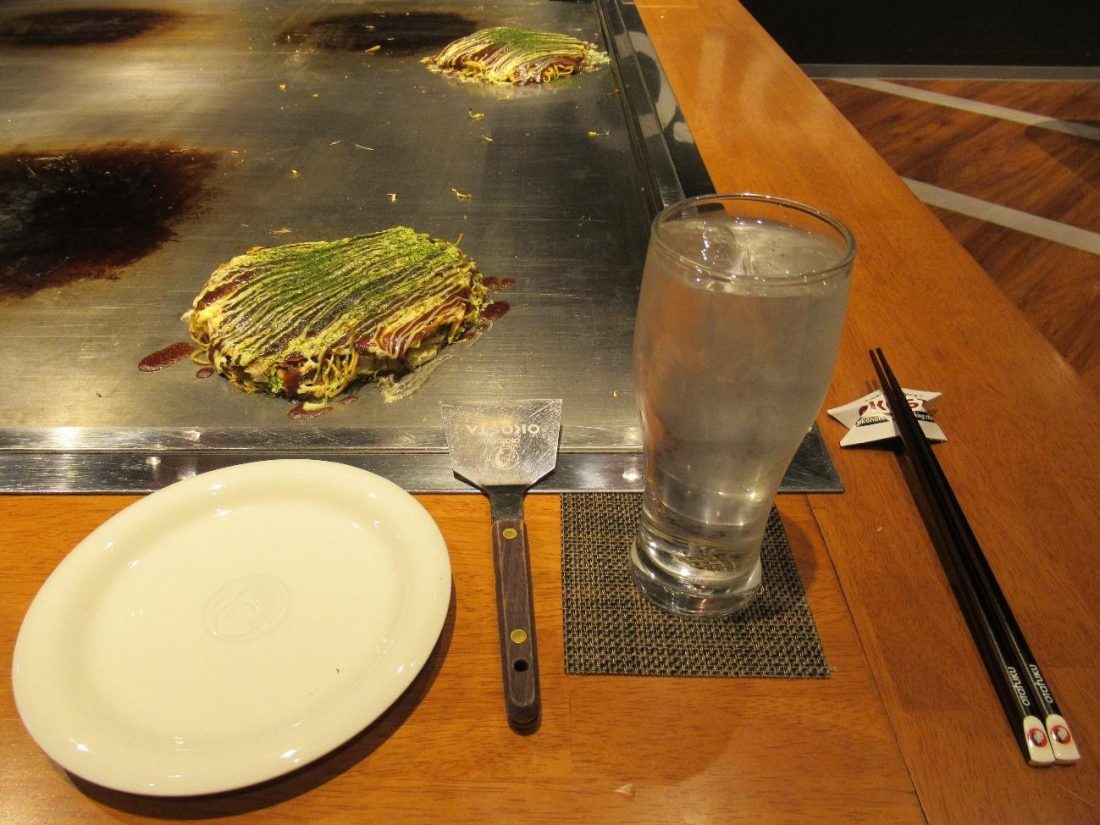
Okonomiyaki is a flexible, relatively cheap, and healthy recipe, making it a wise meal choice for just about anybody, be they locals or visitors. Since the name of the dish literally means, “fried whatever-you-like,” OKOSTA offers a wide range of options when it comes to the types of ingredients and toppings their guest chefs can add. Moreover, with the cooking studio being located in the hub that is Hiroshima Station and offering the classes in both Japanese and English, OKOSTA is built for domestic and international tour groups. However, although the world seems to be ready for Hiroshima-style okonomiyaki, is Hiroshima-style okonomiyaki ready for the world?
The Ruse
Tourists in Japan come in all shapes and sizes, each with their own preferences, especially with regard to food. Some have seafood allergies, some cannot eat certain types of meat, and some may be staunch vegans. On top of that, those who cannot speak Japanese have a considerable language barrier to surmount when voicing their dietary preferences to the cook or server. Those who launched OKOSTA clearly did their homework as they have readied special plans for Muslim and vegetarian visitors. In addition, the reservation website is thoroughly bilingual, allowing international customers to choose from a variety of plans for each individual member and pay by credit card in advance before their arrival in Hiroshima.
I normally don’t like to be a difficult customer, but in order to test the capabilities of the OKOSTA staff I won’t hold back with the particularities. On this episode, I shall pose as an ovo-vegetarian, non-Japanese-speaking foreign tourist who is entranced by the concept of okonomiyaki and will stop to take pictures of every step of the process. When making my reservation online, requesting the vegetarian plan and English explanations was a cinch, and on the evening of my class, I simply made my way up to Hiroshima Station with nothing but my smartphone and camera in hand. It’s a straight shot from downtown on the number 1, 2, or 6 streetcars or any bus line, but as I wanted to work up an appetite before cooking, I opted for the half-hour walk. Once inside the station, OKOSTA can be accessed via ekie Dining with a door leading outside, or by turning right upon leaving the Shinkansen exit on the north side.
The Lesson
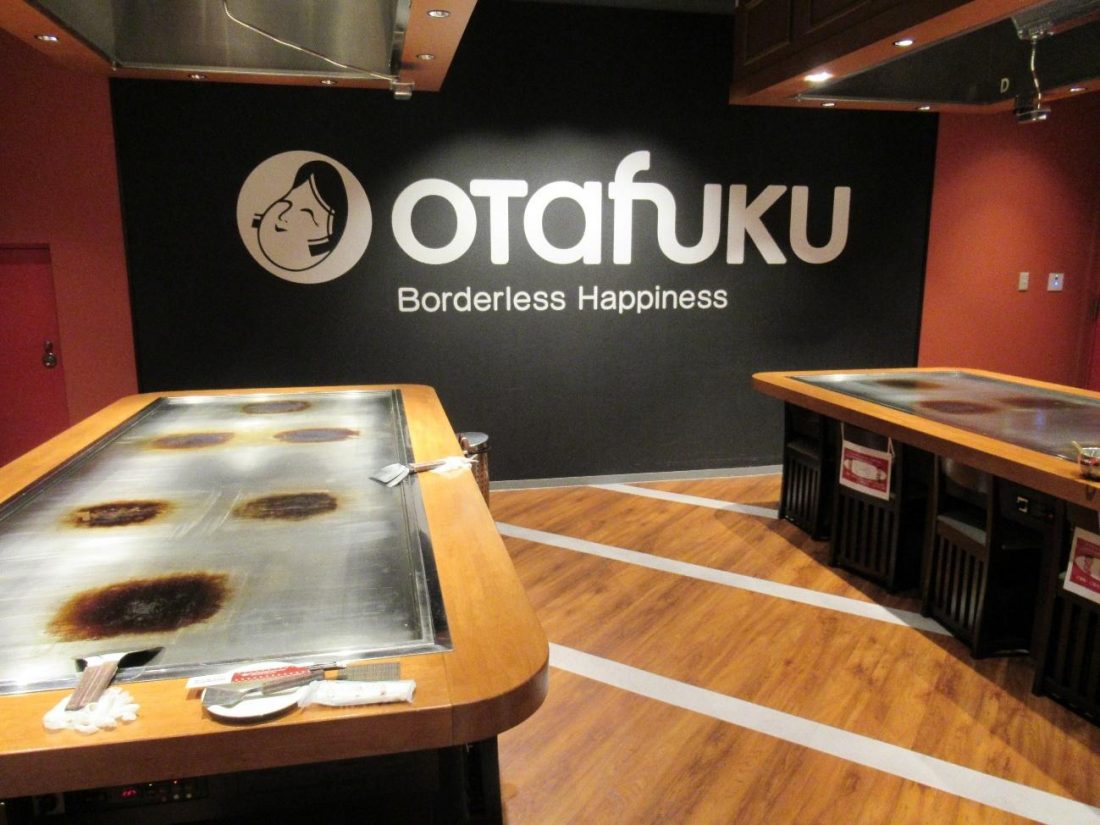 Not too long after entering the studio and confirming my reservation, I was taken to one of four gargantuan griddle tables where the class was to be held. There weren’t too many guests tonight, so each group had an entire table to itself. My space was already prepared with a coaster, a moist towelette, a small plate, a pair of chopsticks, a small spatula for cutting and eating, two large spatulas for cooking, a pair of vinyl gloves, and a souvenir paper hat and apron to take home. There were also sinks nearby so I could wash my hands before putting on my hat and apron.
Not too long after entering the studio and confirming my reservation, I was taken to one of four gargantuan griddle tables where the class was to be held. There weren’t too many guests tonight, so each group had an entire table to itself. My space was already prepared with a coaster, a moist towelette, a small plate, a pair of chopsticks, a small spatula for cutting and eating, two large spatulas for cooking, a pair of vinyl gloves, and a souvenir paper hat and apron to take home. There were also sinks nearby so I could wash my hands before putting on my hat and apron.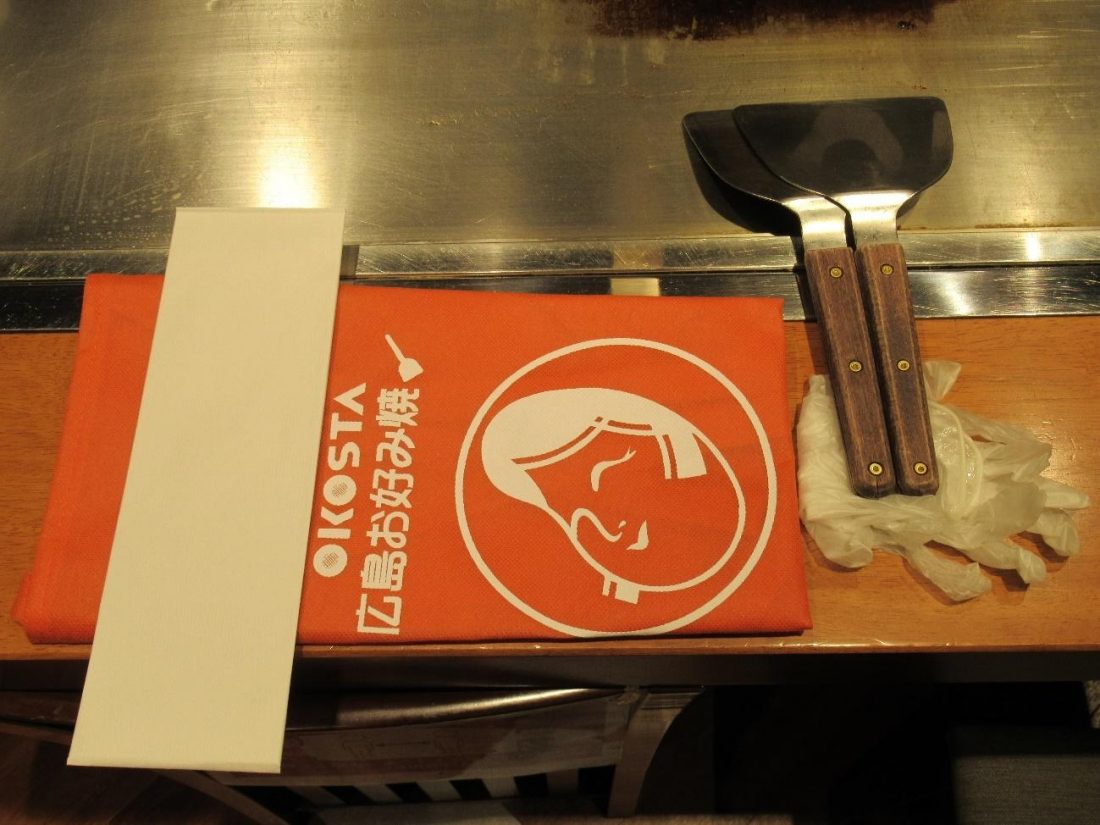
The class began on time as the chef pushed out her cart full of ingredients for our use. Knowing they had an anglophone vegetarian guest tonight, OKOSTA provided a bilingual chef and some special ingredients on the cart just for me. This chef would have to demonstrate every step twice and shuttle between two tables seeing to all of her students, but being secretly bilingual myself, that meant I had the opportunity to hear the instructions twice before attempting anything myself. The first step was to make the crêpe that constitutes the bottom layer of an okonomiyaki. I went over to the other table to hear the explanation in Japanese, where she poured the batter onto the griddle and flattened it into a disc with her ladle.
She then came over to my table to say the exact same thing in English. When making the disc with the ladle, start in the middle and rotate either clockwise or counterclockwise until the disc is uniformly flat. The resulting crêpe should be approximately 20 centimeters in diameter, or about the width of one and a half large spatulas. If a hole forms in the crêpe, simply pour enough batter to fill the hole and let it cook.
Although she made it look easier than it actually was, I successfully made my bottom crêpe.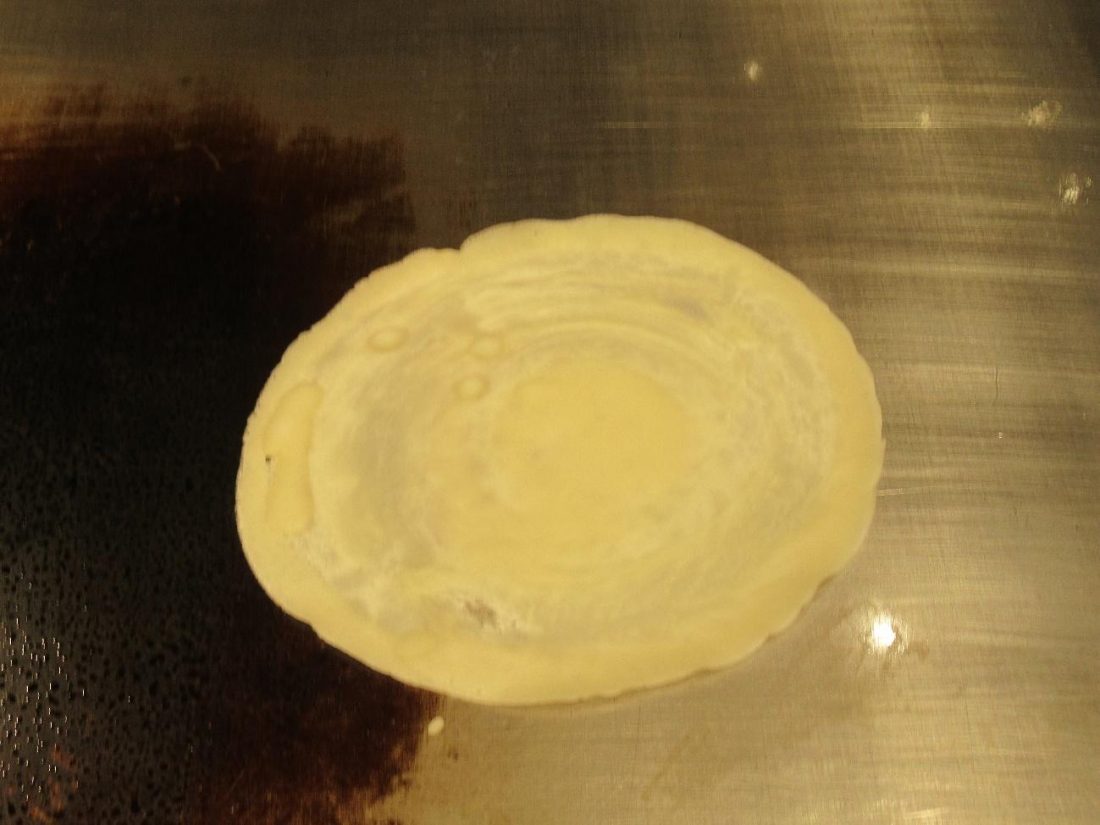
Our second task was to pile on the raw ingredients; this is where the vinyl gloves come in handy. I topped my crêpe with cabbage, green onions, bean sprouts, and pepper salt. The other guests making normal okonomiyaki got to add tempura batter bits too, but as those contain fish extract, I wouldn’t have any tonight. My pepper salt was also a vegetarian substitute for the fish flakes ordinary diners sprinkled on their veggies.
Now comes the next key difference for vegetarians, the soy-based meat substitute. These slabs of protein were marinated in a soy sauce and garlic water solution crafted by the chef herself in order to create a savory taste that can rival the slices of pork belly I’m missing out on. Unfortunately, having the meat analogue also means I won’t be able to choose from the squid chips, melted cheese, extra green onion, spicy dried noodles, or the seasonal topping like regular customers can, but I’ll live. I drizzled some of the leftover batter onto the soy meat before proceeding to the next step.
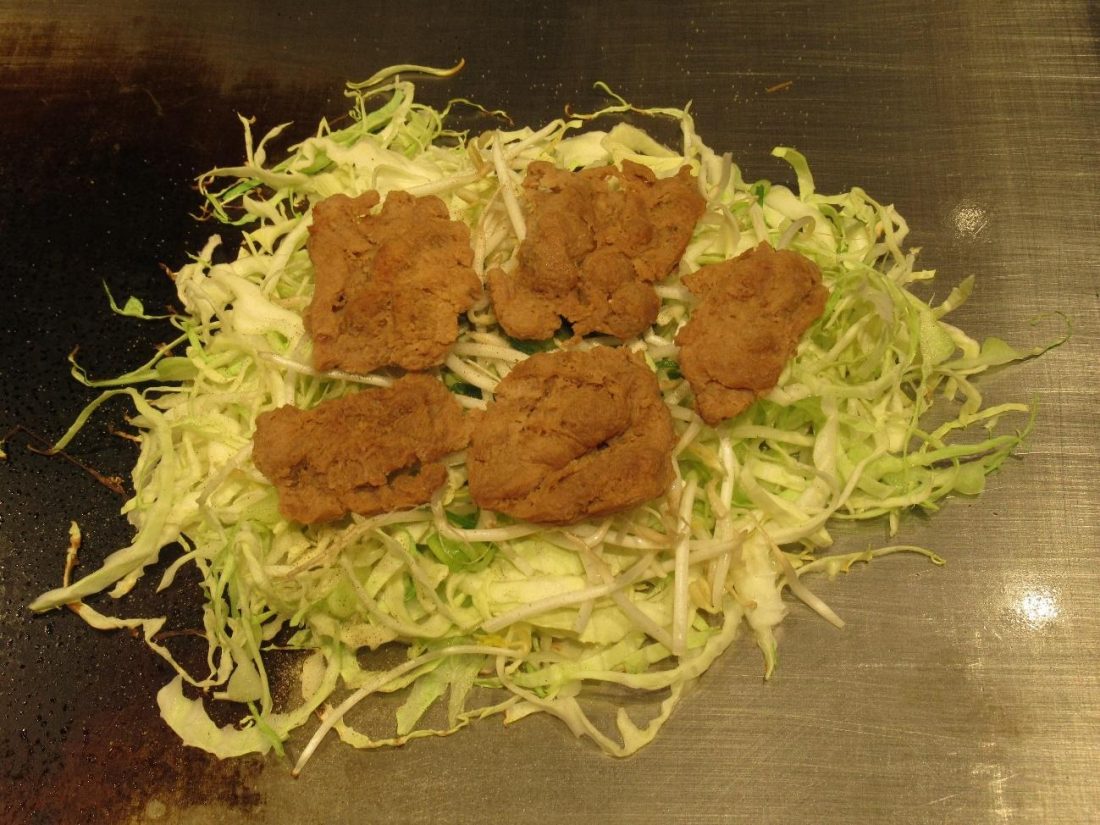
It gets a little more complicated from here, so before we move on, I’ll explain the griddle table a little more. The brown spots on the table are where the flame burns strongest, the silver area has the weakest heat, and the transition zones between brown and silver burn at an intermediate temperature. As can be seen from the pictures, we’ve been grilling on medium heat the entire time. At this point, the chef instructed us to turn up the heat and move our okonomiyaki to the center of the brown spots. There’s a control panel underneath the table that lets cooks control the overall table temperature.
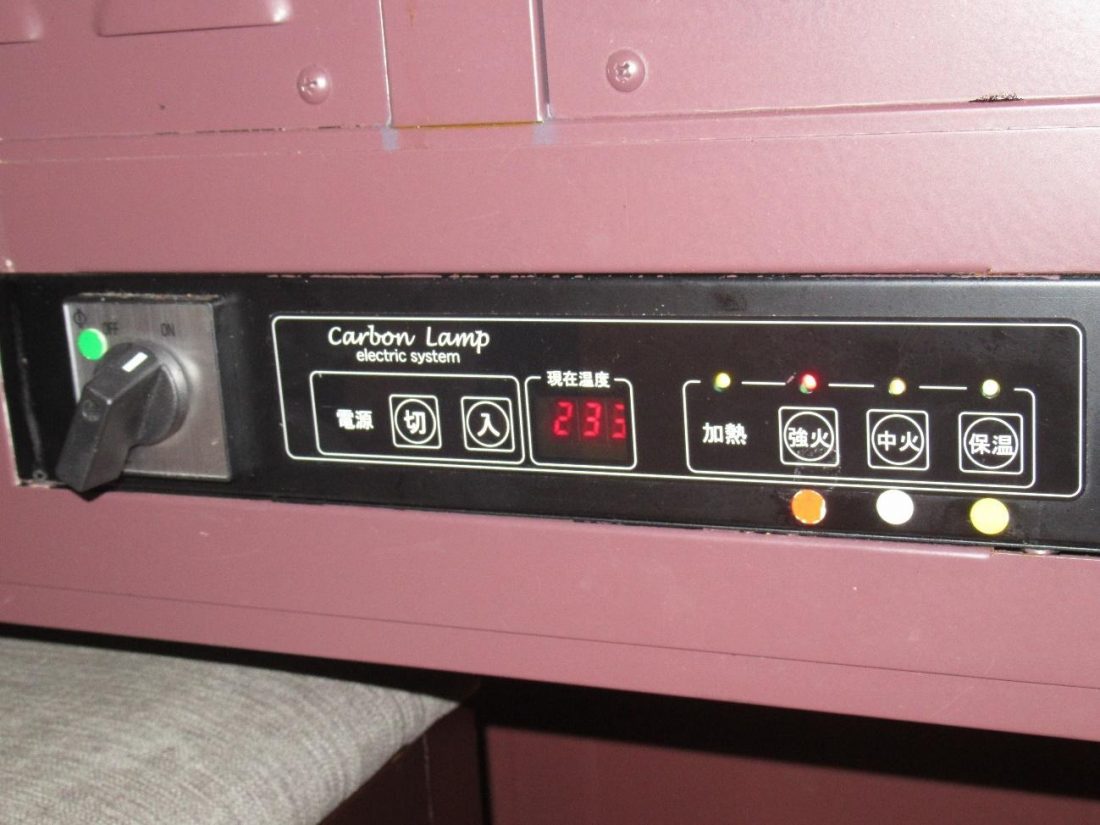
I pressed the button that says “強火 (つよび – high heat)” with the red circle beneath it, making the red lamp above the button flash and maximizing the griddle temperature. Then, we had to use the two large spatulas to flip over our incomplete okonomiyaki so that they land smack dab in the middle of a brown spot. This is actually a deliberate procedure that must be carefully followed to ensure success, so we did a couple practice rounds of flipping thin air before we tried with the real thing.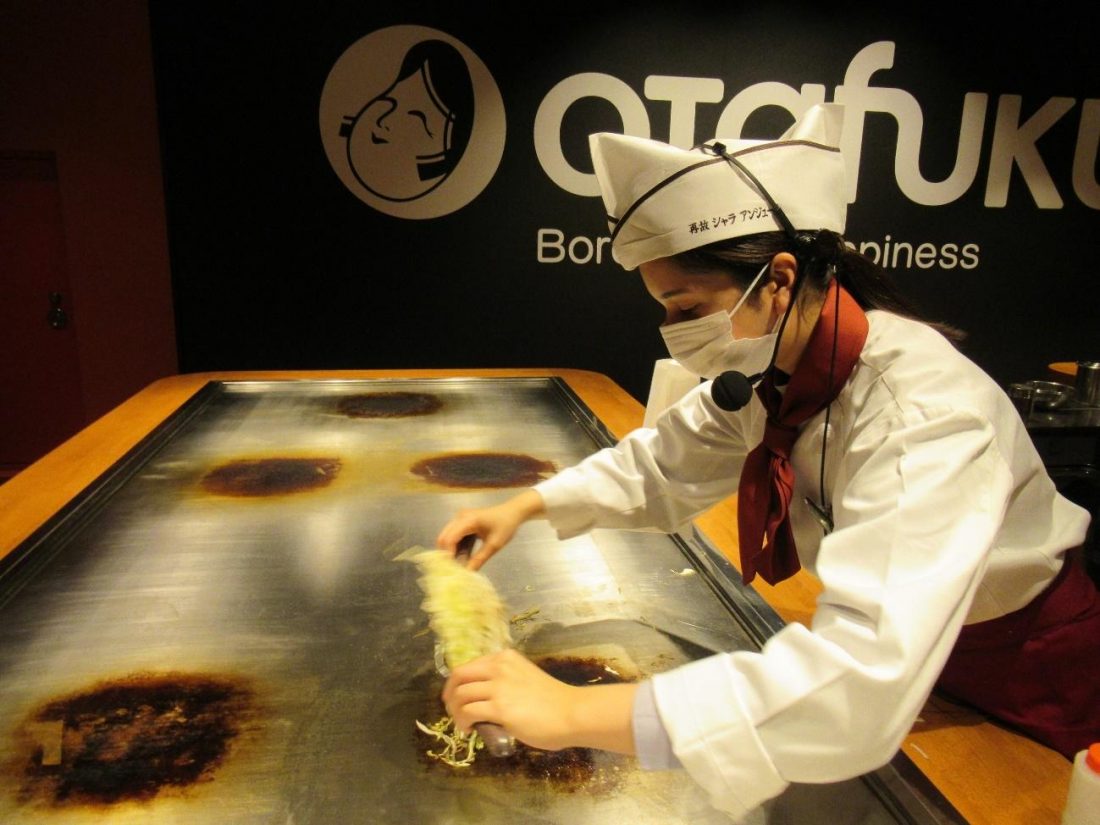
In a nutshell, it’s a three-step process; lift, reach, flip. Firstly, hold a large spatula in each hand, position the spatulas underneath the left and right side of the okonomiyaki, and hold it right above a brown spot. Secondly, with the okonomiyaki supported by the spatulas, extend both arms outward a little past the brown spot. Finally, flip the okonomiyaki inward in one fell swoop, as pictured above. My okonomiyaki landed perfectly intact upside-down, allowing the soy meat and veggies to cook more thoroughly.
Next up were the soba noodles, which came in a plastic pack. We massaged the noodles while still in the pack before opening it and cooking the noodles on low heat. The chef added a little oil to them and had us stir-fry them with Otafuku sauce. A special bottle of organic, vegan Otafuku sauce was prepared just for me. When the noodles were done, the rest of the okonomiyaki was stacked on top of them in the silver area.
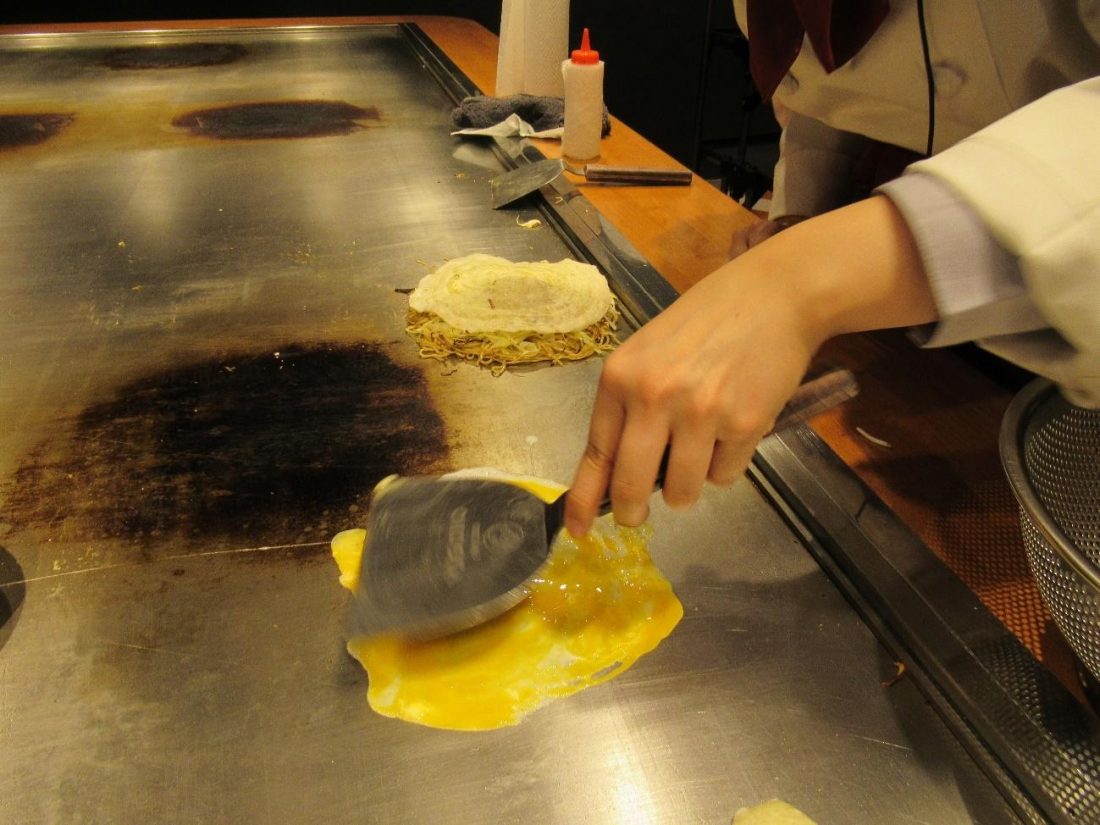
After that, we were taught how to make the egg disc, but before we began, the chef asked me if I could eat eggs. I told her eggs were fine, but if you’re vegan you can skip this phase. We copied the chef in cracking the egg onto the medium zone of the griddle, breaking the yolk with a spatula, and smearing it into a disc the same size as our okonomiyaki. It takes a little while for the egg disc to solidify, but the chef stressed that it’s vital to stack the rest of the okonomiyaki on the egg while it’s still half-cooked. We timed our stacking right, then flipped over our okonomiyaki just like before to complete the process.
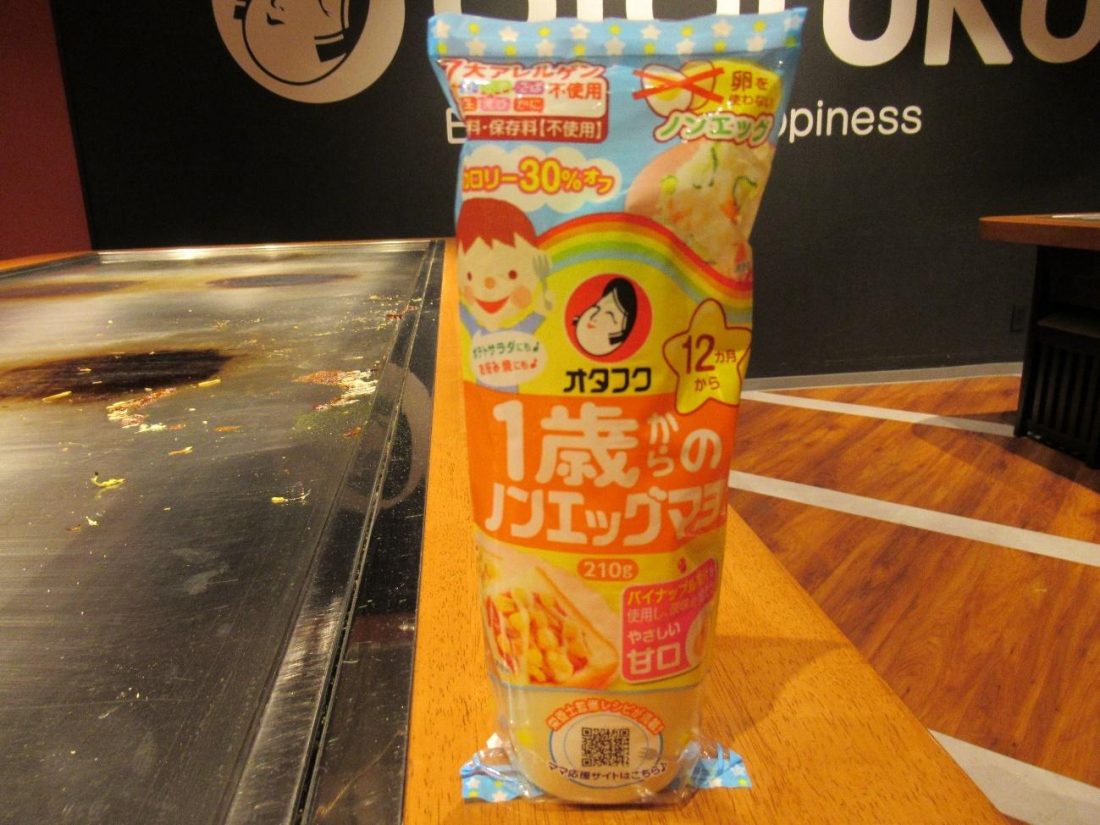
The only thing left was to add the sauces and garnishes to enhance the flavor and presentability of our okonomiyaki. In addition to organic Otafuku sauce, vegetarian diners are also given a bottle of pineapple-flavored non-egg mayonnaise, which can be enjoyed by ages one and up. Once I covered my okonomiyaki with organic Otafuku sauce, drizzled on the non-egg mayo, and sprinkled on some green seaweed flakes, my masterpiece was complete and ready to eat!
The Meal
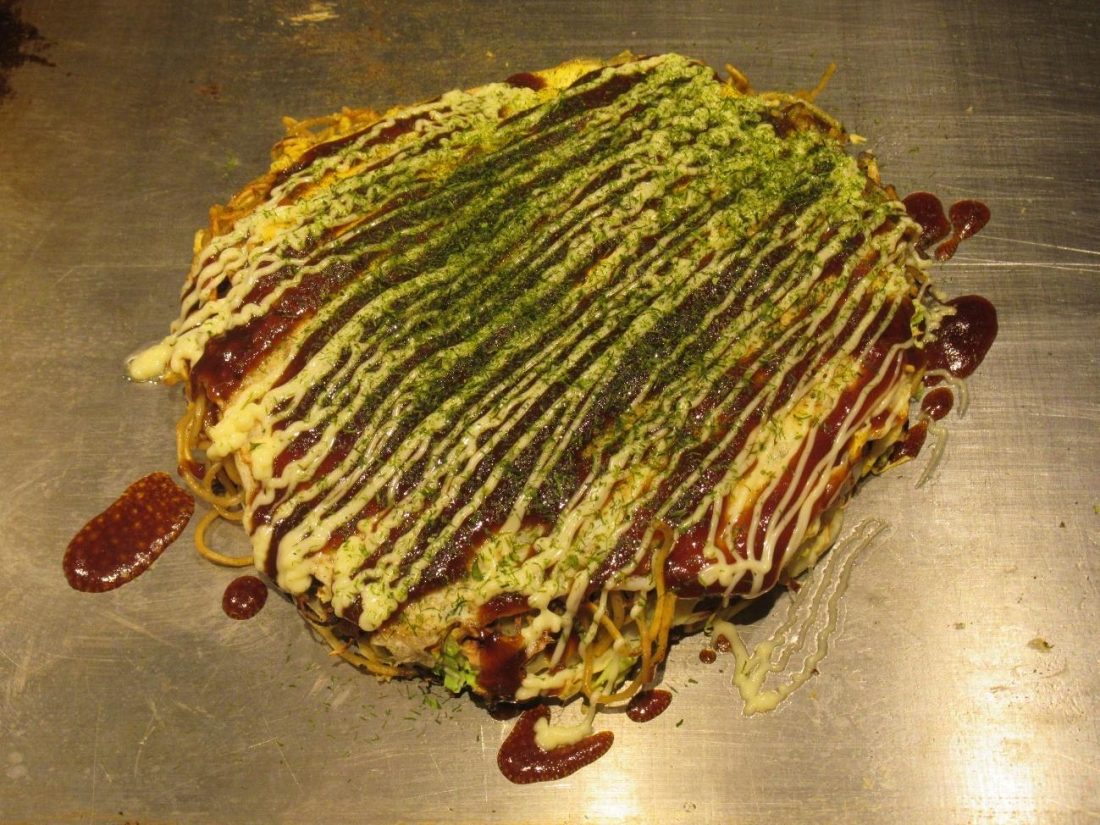
We sat down to eat, and the chef used her smartphone and ours to take pictures of us with our finished products, then let us dine in peace. If I hadn’t gone with the vegetarian plan, I would have been able to decorate my okonomiyaki with one more topping (chosen at the beginning of the lesson) and try a variety of different flavors of Otafuku sauce at the sauce bar. Some of the flavors featured are exclusive to this establishment, so I’ll have to give them a taste one day when I’m not undercover. The chef came by to take drink orders while we dug in, so if you’re craving something besides iced water or ordered an all-you-can-drink dinner plan, this is your chance to find a suitable accompaniment to your meal.
Moment of Joy: The Reveal
Near the end of my meal, the chef approached me to hand me a commemorative photo of me with my self-made okonomiyaki and to have a chat. During the lesson, she was a bit surprised at me already knowing some facts about Hiroshima-style okonomiyaki, to which I replied it was because I live here and frequent okonomiyaki restaurants fairly often.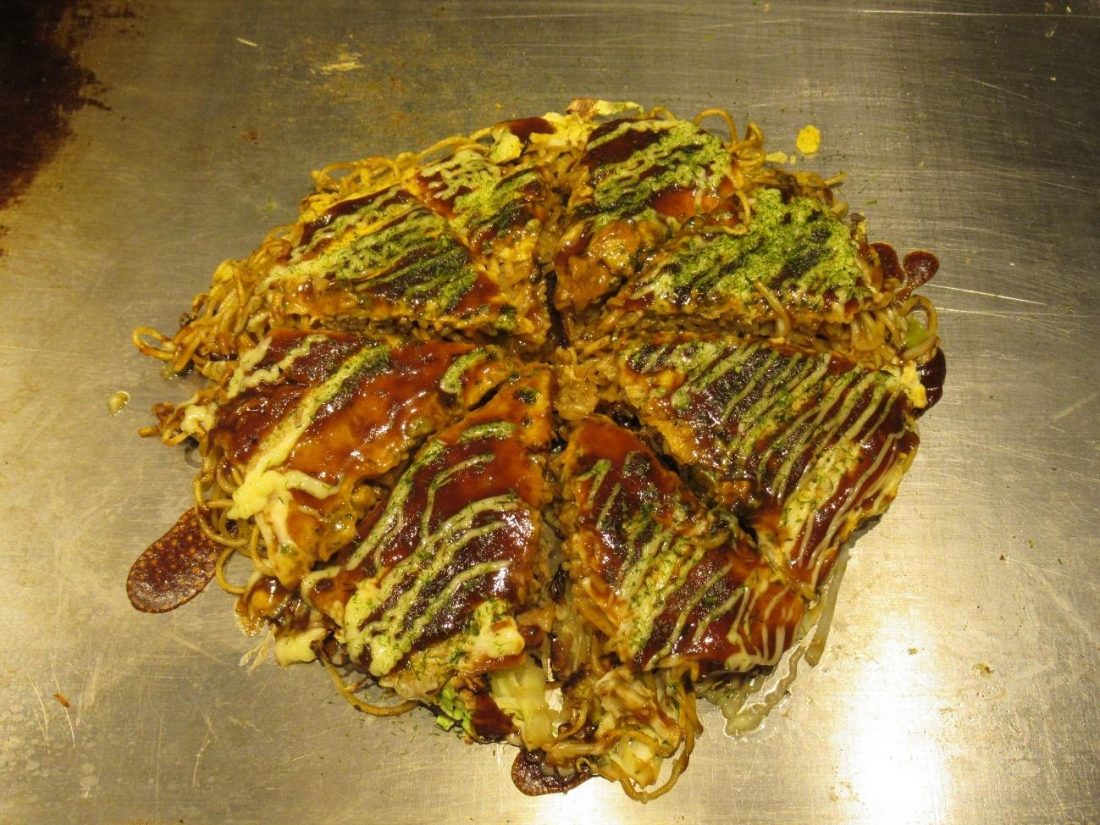
I then utilized this occasion to blow my cover and say, “Psych! I’m not really a vegetarian and I could’ve handled the class in Japanese just fine.” The conversation devolved into Japanese and the staff and I were able to have an engaging and insightful cross-cultural dialogue, not unlike fun conversations with friends and colleagues over a few drinks and comfort food to be shared.
The Verdict
The conversation lasted well past their closing time, but the cooks stayed warm and hospitable, continuing to pour me water as we discussed topics like the challenges of explaining Japanese foods and ingredients in English as well as the need for increased interaction between Japanese and foreigners in Japan. I told my chef for the night that I was merely testing her English ability and apologized if I had given her a hard time with my disguise, but she said my treatment was still light. Her English was actually much better than she gave herself credit for, especially since I was asking more questions than I believe a typical tourist would. Tourists from overseas are in safe hands with her at the helm, and I hope to see more bilingual chefs rise to the occasion at OKOSTA. At the end of the night, they gave me a bag to carry home my hat, apron and photograph, and then saw me to the front door to bid me farewell.
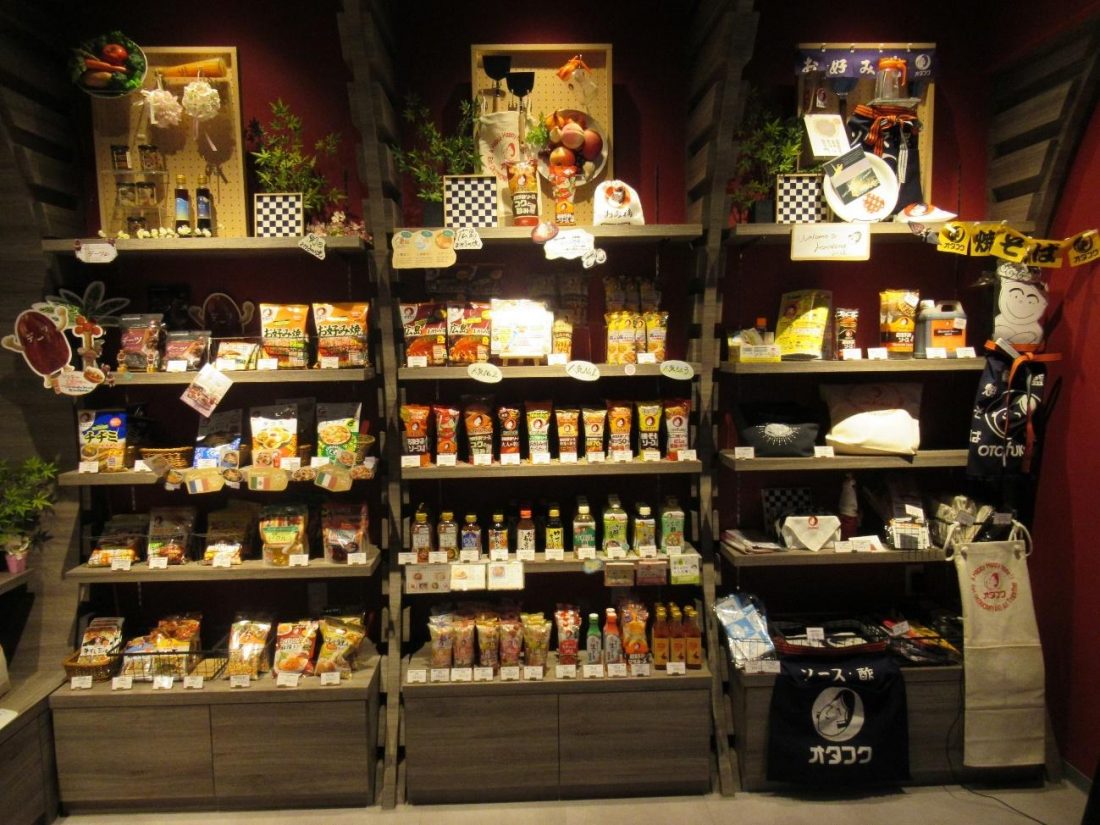
Back to my initial question: is Hiroshima-style okonomiyaki ready for the world? Of course, that depends on the establishment serving it, but at the least, I can say with certainty that OKOSTA and the Otafuku Sauce Company are fully-equipped to handle the swathes of foreign visitors whose numbers will inevitably increase in the coming years. Their slogan is “Borderless Happiness,” which they will undoubtedly share across national borders through this special workshop. After all, the way to a man’s heart is through his stomach, and they definitely touched mine with their skillful spatulas. I’m looking forward to visiting OKOSTA again in the future, but next time, I’ll just be myself.

